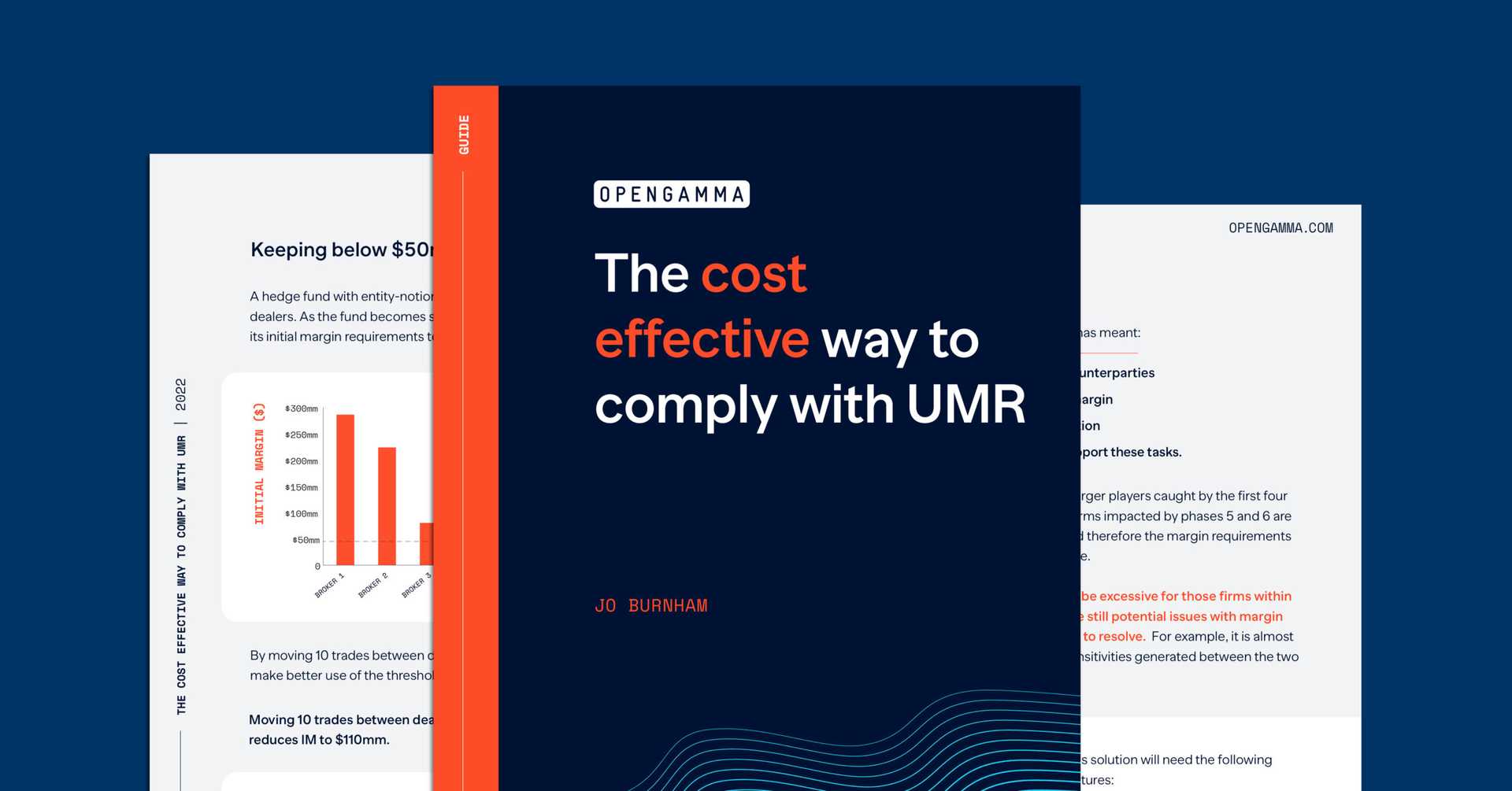The European Banking Authority has published a consultation paper on draft Regulatory Technical Standards (RTS) on Initial Margin Model Validation (IMMV) and all responses should now have been received. We previously talked about how to avoid back-testing SIMM margin. Unfortunately, other than avoiding being caught by UMR by staying below the AANA threshold or ensuring that margin requirements are never over the 50 million threshold, it looks as though all firms will have to conduct some form of backtesting.
However, it’s not all bad news. The EBA has realised the overhead that this backtesting could have, particularly on smaller firms. Therefore, they have proposed different requirements depending on the size of the firm:
- Large firms ( > EUR750 Billion AANA) will be required to support standard model validation.
- Other firms ( < EUR750 Billion AANA) will be required to support a simplified model validation.
The standard model is a complex process that includes the definition of stress scenarios. The calculations are similar to those conducted by CCPs for backtesting their own margin models. Luckily there are only about 20 firms that fall into the “large” category, all of whom are probably already supporting backtesting for other purposes. We will concentrate on the functionality that needs to be supported for the simplified model.
Simplified Model
The object of the simplified model is relatively straightforward – validate that the amount of margin calculated would have been sufficient to cover any subsequent losses. In theory all you need to do to support this is to keep a record of the SIMM requirements and portfolio profits and losses, and then compare one with the other.
However, there are a couple of issues that make this not quite as easy as first thought:
- The holding period assumed in the SIMM calculation is 10 days (this is the assumption used when the various parameters are set). However, the backtesting is based on having sufficient margin each day.
- The profits and losses required should be independent of any portfolio changes, such as new trades.
This means that some additional functionality is required to support backtesting under UMR:
There are two options for adjusting the SIMM margin calculation so that it covers a 1 day rather than a 10 day holding period:
- Use a scalar of square root of 10. This is similar to the way that CCPs scale initial margin to convert from a 5 day to a 7 day holding period for client accounts on OTC markets.
- Recalculate the SIMM margin using a set of parameters based on a 1 day holding period.
Either method will result in a separate set of margin results that need to be stored alongside the production numbers.
For the profit and loss calculation, it will not be possible to use the standard daily PnL figures as these will include new and expiring trades, as well as other position changes such as option exercise. Instead a separate PnL will be required based on the end of day positions on which the SIMM calculation was based.
What Firms Need to Do
If firms believe that they are going to be captured by UMR because of the level of their AANA, and if their margin requirements will quite quickly go above the 50 million threshold then they need to start preparing for backtesting. The following will be required to support the necessary functionality:
- Calculation and storage of alternate SIMM numbers based on 1 day holding period.
- Calculation and storage of alternate PnLs based on overnight positions.
- Analysis and reporting on this data highlighting any exceptions.
Although the EBA are allowing time for firms to be ready for the new backtesting regime, it is better to put solutions in place as soon as possible so that they are well bedded in by the time they are required. And the additional information provided by any backtesting report can help in having a better understanding of margin and how the requirements are related to the profits and losses on a portfolio.
Weidmann, Arthur. (Photographer). August 21st, 2021.




